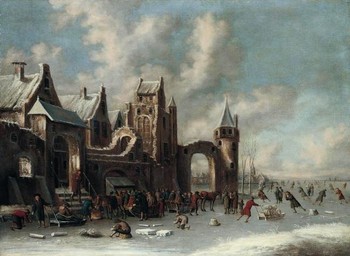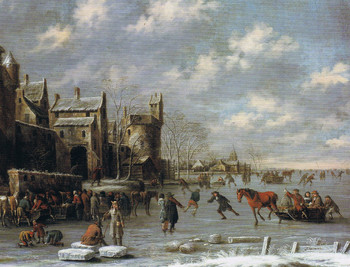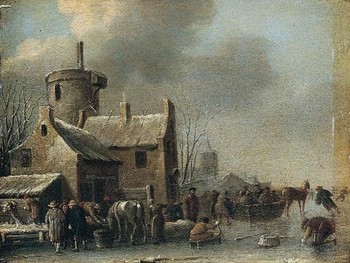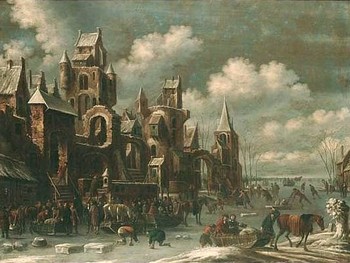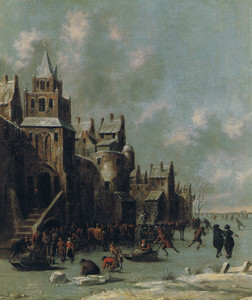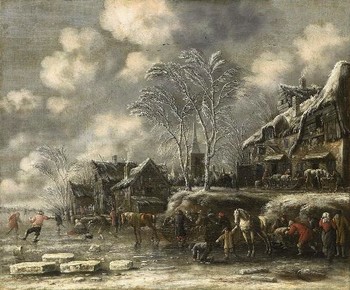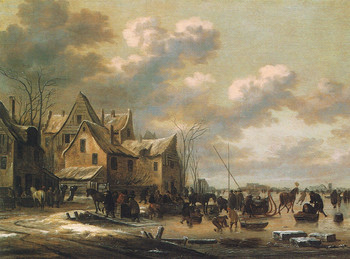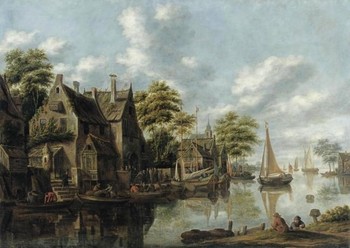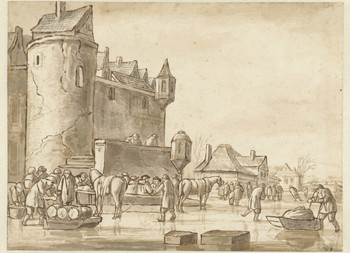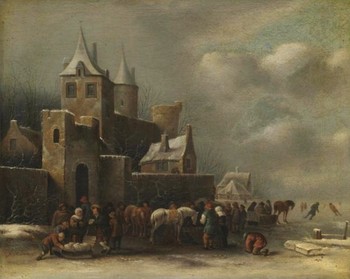Thomas Heeremans
Townsfolk skating and sledging on a frozen moat before a town wall
Oil on canvas : 80,7 X 67,7 cm
Unsigned
Sold at Christie’s South Ken London, 14/12/01
For 21.150 £ = 34.606 €
This is a comparative item
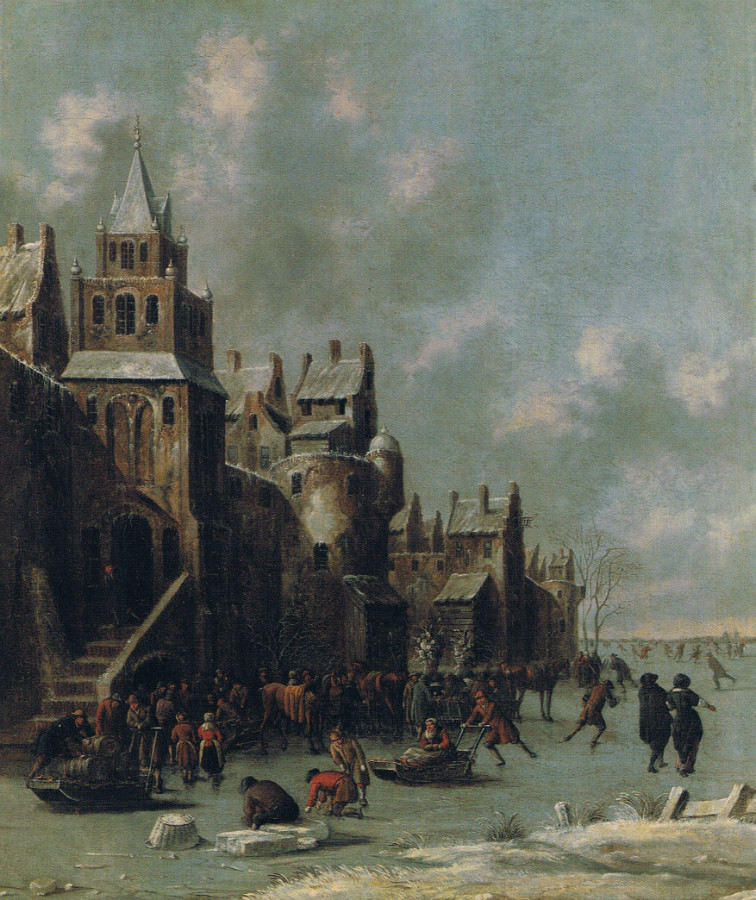
Painting for Sale
In short
Heeremans painted in his hometown Haarlem joyful summer and winter landscapes animated by many figures.
He painted this composition in 1685. January 1684 had been the coldest month of the 17th century.
About Thomas Heeremans
Dutch painter
Haarlem 1641 – 1697 Haarlem
Heeremans specialized in summer and winter landscapes with numerous figures enjoying themselves. He also painted a few beach scenes set into the dunes.
He was a pupil of the classicising history and portrait painter Cesar Boetius van Everdingen, who was active in Haarlem between 1648 and 1658. Van Everdingen seems to have had very little impact on Heeremans, who became strongly influenced by the work of the slightly earlier Haarlem painter Klaes Molenaer (Haarlem before 1630 – 1676 Haarlem). Molenaer’s earliest dated painting is from 1644. He became a member of the Painter's Guild of Saint Luke of Haarlem in 1651.
Both Heeremans and Molenaer specialised in representations of every day outside activities and of moments of leisure of the population of the countryside and small towns of the Dutch Republic.
Heeremans became member of the Painters’ Guild of Saint Luke in his native Haarlem in 1664. He seems to have been active his complete career in Haarlem.
Dated works known between 1660 and 1694.
About our painting
Heeremans painted fictitious views of ice skaters outside a small village or outside the ramparts of his hometown Haarlem. He also painted summer scenes set in small, unidentifiable villages of Holland. Just one of these small places, Medemblik, has been identified in a painting, currently in London with the Adam Jacobs Gallery.
North-Western Europe went through a small ice age from circa 1550 until the middle of the 19th century.
Two thirds of the winters in Holland between 1600 and 1700 were very cold with long periods of frost and snow. Especially the winters of 1662-63 and of 1671-72 were very cold; January 1684 must have been the coldest month of that century. Heeremans painted this winter scene one year later.
About the attraction of painted winter scenes
The harsh weather conditions during winter change the light, the air, the atmosphere, the colours. This must have been a first challenge for painters.
Fifty five percent of Holland lays under the level of the sea. The country was/is constantly fighting to evacuate water from the land: there are numerous rivers and canals. Frozen water ways offered people the chance to have a good time on the ice: a mix of people from all social layers would go for a stroll on the ice, others would go ice skating, go for a ride in a sledge, play kolf (the popular forerunner of ice hockey).
Merchants would set up shops on the ice. People could eat and drink in a typically Dutch “koek-en-zopie” tent. This term refers to the food and beverage that one could and still can buy while ice skating. Its best known drink was “zopie”; that was made of “bock”, which was a strong German lager, mingled with rum.
Daily life was partly transposed onto the ice: goods and passengers were ferried by sledge, instead of by carts or boats; the water supply would be ensured by a makeshift well that had been cut into the ice.
It is clear that the atmospheric conditions, the pleasures and businesses of winter formed a very attractive subject for the painters, for their clients and still do for our clients.
Painted winter landscapes had initiated in Flanders with Pieter Brueghel the Elder in the third quarter of the 16th century. Following the iconoclast riots and the Sack of Antwerp in 1576 Flemish Protestants fled in large numbers to Holland. Amongst them many painters. Hans Bol and David Vinckboons brought this new subject to Holland, especially to Amsterdam.
Seventeenth century Dutch winter landscapes can be divided in several categories according to the emphasis stressed by the painter: did he go for anecdotic, Flemish-inspired genre scenes or for a naturalistic, atmospheric, sober, sometimes monochrome approach or of course for a blend of both.
To the first group belong Hendrick and Barent Avercamp, Adriaen van de Venne, Arent Arentsz., nicknamed Cabel, the early Jan van Goyen, Isaak van Ostade, Jan and Abraham Beerstraaten, Klaes Molenaer and Thomas Heeremans.
To the second group Esaias van de Velde, monochrome works of Jan van Goyen, Salomon and Jacob van Ruysdael, Aert van der Neer and Jan van de Capelle.
Why should you buy this painting?
Because it is a typical Dutch winter scene with ice skaters on a frozen river outside the ramparts of Haarlem.
Comparative paintings
Click photos for more details

